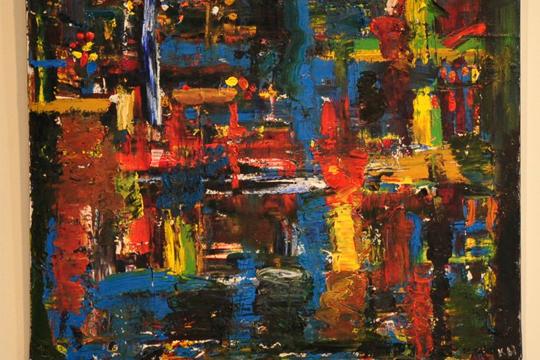‘What you see is what you get’
March 15, 2012
A May graduation is something that couldn’t have come sooner for Kaylee Hesse, an art student who has been in attendance at Washburn University since 2005, never switching majors.
Before Hesse graduates, her senior art exhibit, “What You See is What You Get” will be on display.
The exhibit is currently presented in the downstairs gallery of the Washburn Art Building on campus and will remain there until March 30. The art building will be closed in accordance with spring break, however.
Hesse’s gallery talk, for faculty and art majors, is taking place today at noon. Her gallery reception, open to the public, will be held Friday, March 16, from 6 to 8 p.m.
If a student can’t make it to the gallery talk or reception, a guest sign-in book will be available to make a mark when viewing the exhibit. Hesse encourages guests to sign in and comment on their thoughts of the exhibit or even (jokingly) draw a picture.
Since high school, Hesse has surrounded herself with art. She struggled to find a job in high school, so her mother urged her to find something else to get interested in.
Hesse sold her first piece of art around the age of 17 and knew from that moment on that art was something that was going to stick around for awhile.
“If you can see something in a piece, it is not intentional,” said Hesse. “I leave it open to the viewer’s imagination.”
Hesse describes her collection as mostly printmaking, with a touch of sculptures. One sculpture in the piece, entitled “Iron Horse Yoga” includes a series of railroad ties. The various positioning of the pieces remind Hesse of yoga poses.
“For the rest of my prints and work, I experiment with the found materials,” said Hesse. “I use various and different processes, with most of my imagery being non objective abstraction.”
Hesse goes on to explain that if she uses real subject matter, she worries it will limit her explorations.
Keeping her personal life out of her work was something Hesse strived for in the beginning. The surprise and anticipation of the art is one of
Hesse’s favorite aspects of printmaking, explaining that you never know what you’re going to get when you roll a print through the press. Through her art work and daily life, Hesse goes by the words of her exhibit’s title.
“I don’t pull additions,” said Hesse. “Every plate that I make is different than the other, maybe by a zilch or what not, but it’s always gonna be different, and I always like that.”



